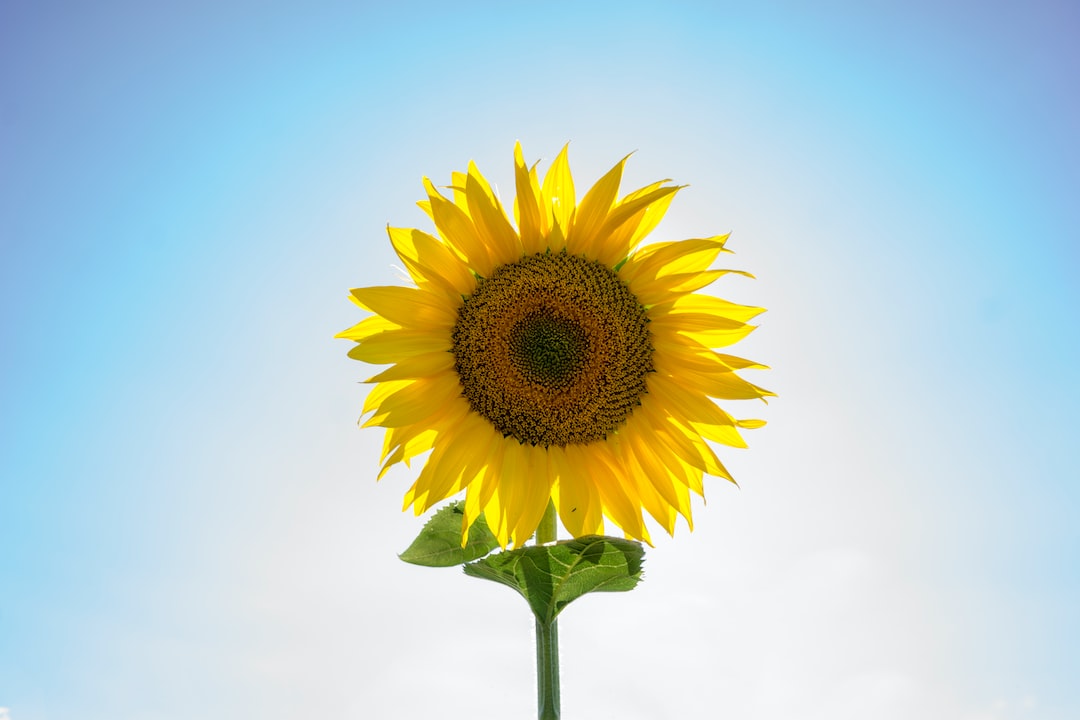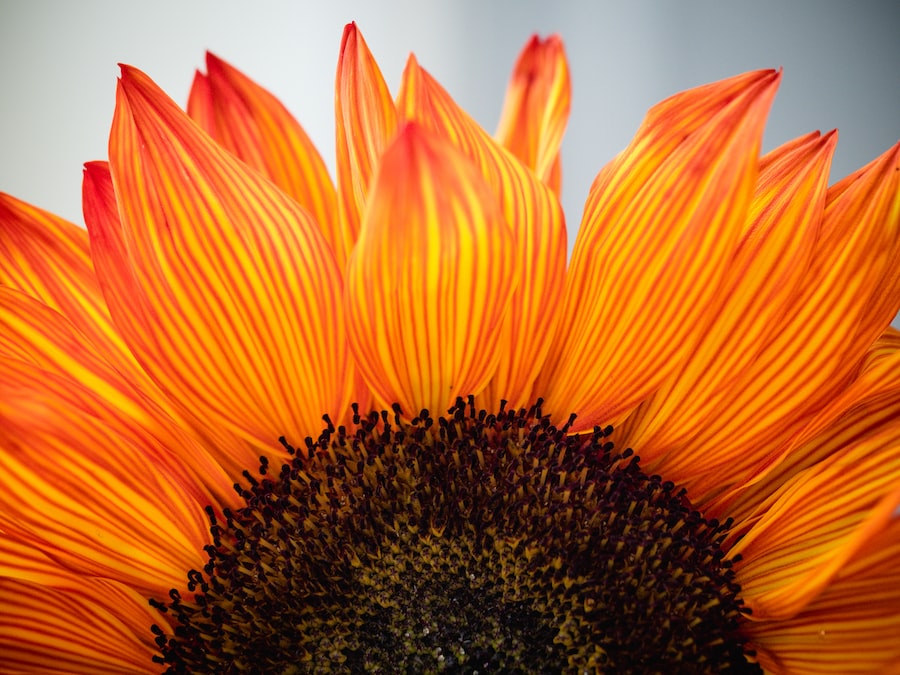Harvesting Sunflower Seeds: A Step-by-Step Guide to Extracting the Perfect Snack

Sunflower seeds are a popular snack and ingredient in many dishes, known for their nutty flavor and crunchy texture. They are not only delicious but also packed with nutritional benefits. Sunflower seeds are an excellent source of healthy fats, protein, fiber, vitamins, and minerals. They are rich in vitamin E, which is a powerful antioxidant that helps protect the body from free radicals. Additionally, sunflower seeds contain magnesium, which plays a crucial role in maintaining healthy bones and muscles.
Key Takeaways
- Sunflower seeds offer numerous health benefits, including being a good source of protein, healthy fats, and antioxidants.
- Choose sunflowers with large, plump heads and avoid those with damaged or moldy flowers for optimal seed harvesting.
- Prepare your garden by ensuring adequate spacing between sunflowers and providing proper soil and water conditions.
- Harvest sunflower seeds when the flower heads have turned brown and the seeds are plump and firm.
- Essential tools for sunflower seed harvesting include gloves, pruning shears, and a large container for collecting seeds.
Choosing the Right Sunflowers for Seed Harvesting
When it comes to choosing sunflowers for seed harvesting, there are several factors to consider. First, you need to decide what type of sunflower you want to grow. There are different varieties available, including dwarf sunflowers, tall sunflowers, and colored sunflowers. Each variety has its own unique characteristics and growth habits.
Next, consider the size of the flower head. Larger flower heads tend to produce more seeds, but they may also require more space in your garden. If you have limited space, you may want to opt for smaller varieties that still produce a good yield of seeds.
Lastly, consider the maturity time of the sunflower. Some varieties mature faster than others, so if you’re looking for a quicker harvest, choose a variety with a shorter maturity time.
Preparing Your Garden for Sunflower Seed Harvesting
Before planting sunflowers for seed harvesting, it’s important to prepare your garden properly. Sunflowers prefer well-drained soil with a pH level between 6.0 and 7.5. Start by loosening the soil with a garden fork or tiller to ensure good drainage.
Next, amend the soil with organic matter such as compost or aged manure to improve its fertility and nutrient content. This will provide the sunflowers with the necessary nutrients for healthy growth.
When planting sunflower seeds, make sure to space them properly to allow for adequate air circulation and prevent overcrowding. Plant the seeds about 1-2 inches deep and 6-12 inches apart, depending on the variety.
When to Harvest Sunflower Seeds: A Guide to Timing
| Stage | Description |
|---|---|
| Flowering | Sunflower head is fully open and petals are visible |
| Seed Development | Seeds are forming and head is starting to droop |
| Ripening | Seeds are plump and head is drooping further |
| Drying | Seeds are fully formed and head is completely drooped |
| Harvest | Seeds are dry and can be easily removed from the head |
Knowing when to harvest sunflower seeds is crucial to ensure optimal flavor and texture. The first sign that sunflower seeds are ready for harvesting is when the back of the flower head turns yellow or brown. This indicates that the seeds are mature and ready to be harvested.
Another way to determine if sunflower seeds are ready for harvesting is by gently pressing on the back of the flower head. If the seeds feel firm and do not easily come off, they are not yet ready. However, if the seeds come off easily and feel plump, they are ready for harvest.
The best time of day to harvest sunflower seeds is in the morning when the dew has dried but before the heat of the day sets in. This ensures that the seeds are dry and less likely to spoil during storage.
Tools and Equipment Needed for Sunflower Seed Harvesting
To harvest sunflower seeds, you will need a few essential tools. These include a pair of garden shears or scissors for cutting the flower heads from the stalks, a bucket or basket for collecting the flower heads, and a clean, dry cloth or tarp for drying the seeds.
Optional equipment that can make harvesting easier and more efficient include a garden rake or pitchfork for loosening the soil around the base of the sunflowers, a step ladder or stool for reaching taller sunflowers, and a seed cleaning machine or sieve for separating the seeds from the debris.
How to Remove Sunflower Seeds from the Flower Head

Once you have harvested the sunflower flower heads, it’s time to remove the seeds. Start by gently rubbing or brushing your hand over the flower head to loosen the seeds. Then, use your fingers or a small tool to pry the seeds out of the flower head.
To minimize seed loss and maximize yield, it’s important to be gentle and careful when removing the seeds. Avoid using excessive force, as this can damage the seeds and reduce their quality.
After removing the seeds, place them on a clean, dry cloth or tarp to dry. Spread them out in a single layer and allow them to air dry for several days until they are completely dry and no longer moist.
Drying and Storing Sunflower Seeds for Optimal Freshness
Properly drying and storing sunflower seeds is essential to maintain their freshness and prevent spoilage. After the seeds have been air-dried, transfer them to a clean, dry container with an airtight lid. This will help protect the seeds from moisture, pests, and oxidation.
Store the container in a cool, dark place such as a pantry or cupboard. Avoid storing sunflower seeds in the refrigerator or freezer, as this can cause them to become stale or lose their flavor.
It’s also important to periodically check the stored seeds for any signs of mold or spoilage. If you notice any discoloration or an off smell, discard the affected seeds immediately to prevent contamination of the rest of the batch.
Roasting Sunflower Seeds: Tips and Tricks for the Perfect Snack
Roasting sunflower seeds is a popular way to enhance their flavor and create a delicious snack. To roast sunflower seeds, start by preheating your oven to 350°F (175°C). Spread the dried sunflower seeds in a single layer on a baking sheet lined with parchment paper.
Roast the seeds in the preheated oven for about 10-15 minutes, or until they turn golden brown. Make sure to stir them occasionally during roasting to ensure even browning.
Once the seeds are roasted to your desired level of crispiness, remove them from the oven and let them cool completely before enjoying. Roasted sunflower seeds can be eaten as a snack on their own or used as a topping for salads, soups, or baked goods.
Creative Ways to Use Sunflower Seeds in Your Cooking and Baking
In addition to snacking and roasting, there are many creative ways to incorporate sunflower seeds into your cooking and baking. Here are a few ideas:
1. Add sunflower seeds to homemade granola or trail mix for an extra crunch and nutritional boost.
2. Use ground sunflower seeds as a gluten-free alternative to flour in baking recipes.
3. Sprinkle sunflower seeds on top of yogurt or smoothie bowls for added texture and flavor.
4. Blend sunflower seeds with herbs, garlic, and olive oil to make a homemade sunflower seed pesto.
5. Use sunflower seed butter as a spread on toast, sandwiches, or fruit.
Enjoying the Fruits of Your Sunflower Seed Harvesting Efforts
Harvesting sunflower seeds can be a rewarding experience that allows you to enjoy the many benefits of these nutritious seeds. From choosing the right sunflowers for seed harvesting to properly drying and storing the seeds, each step in the process is important for achieving optimal results.
By following the tips and techniques outlined in this article, you can successfully harvest sunflower seeds and enjoy them in a variety of ways, from snacking to cooking and baking. So why not give it a try and enjoy the fruits of your sunflower seed harvesting efforts?
If you’re curious about how to get sunflower seeds from a sunflower, you might find this article on Lawn World’s website quite helpful. They have a comprehensive guide that explains the process step by step. From planting the sunflower seeds to nurturing the plant, and finally harvesting the seeds, this article covers it all. If you want to learn more, check out their informative guide here.
FAQs
What are sunflower seeds?
Sunflower seeds are the edible fruit of the sunflower plant. They are small, flat, and oval-shaped with a hard outer shell and a kernel inside.
When is the best time to harvest sunflower seeds?
The best time to harvest sunflower seeds is when the flower head has fully matured and the back of the flower head turns yellow or brown. This usually occurs in late summer or early fall.
How do you remove sunflower seeds from the flower head?
To remove sunflower seeds from the flower head, you can use your hands or a tool such as a fork or a comb. Gently rub or scrape the seeds from the flower head and collect them in a bowl or container.
How do you prepare sunflower seeds for consumption?
To prepare sunflower seeds for consumption, you can roast them in the oven or on a stovetop. Spread the seeds in a single layer on a baking sheet and roast them at 350°F for 10-15 minutes, or until they are golden brown. You can also eat them raw or add them to salads, granola, or trail mix.
Are sunflower seeds healthy?
Yes, sunflower seeds are a healthy snack option. They are high in protein, fiber, healthy fats, and various vitamins and minerals such as vitamin E, magnesium, and selenium. However, they are also high in calories, so it’s important to consume them in moderation.



